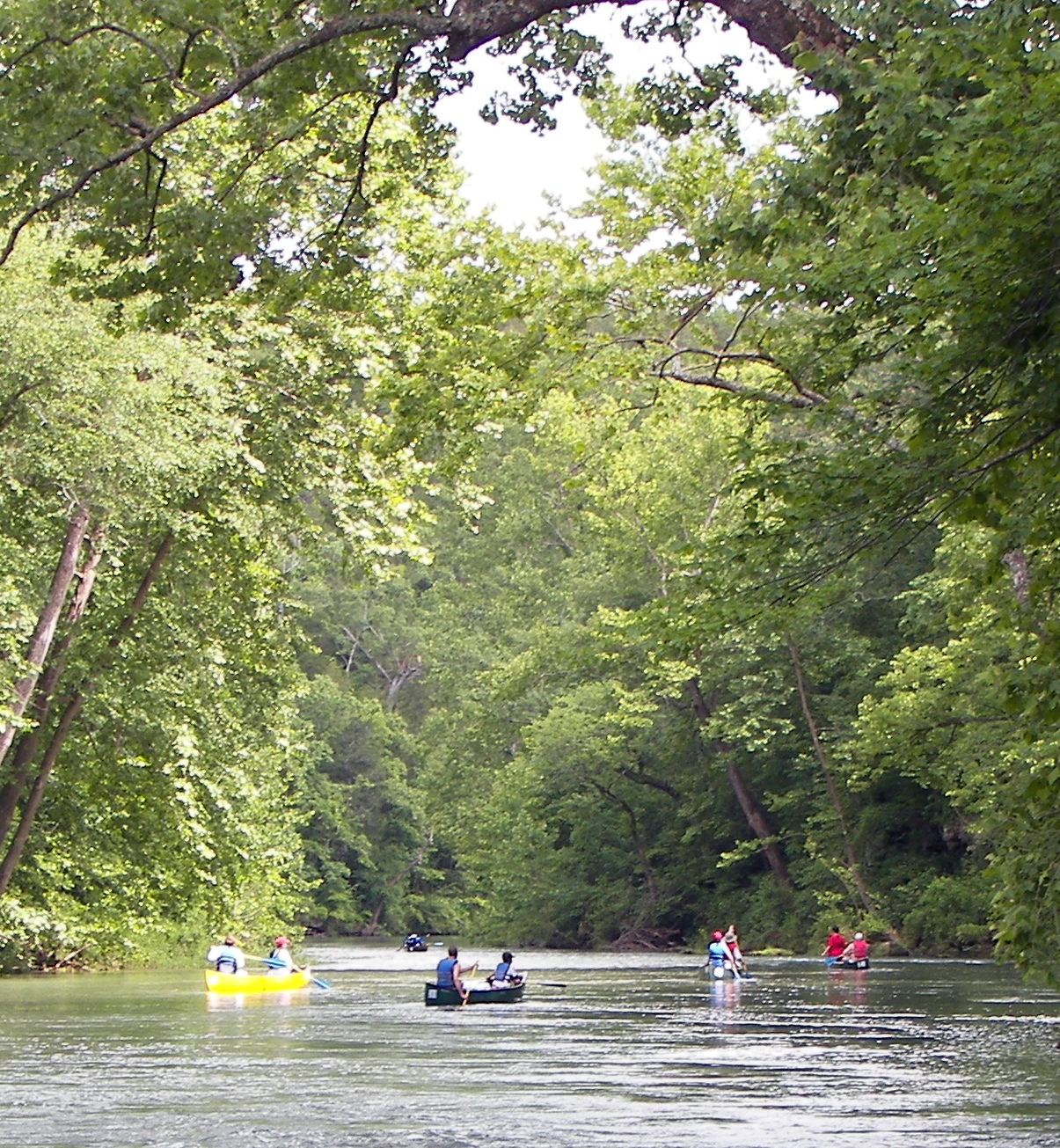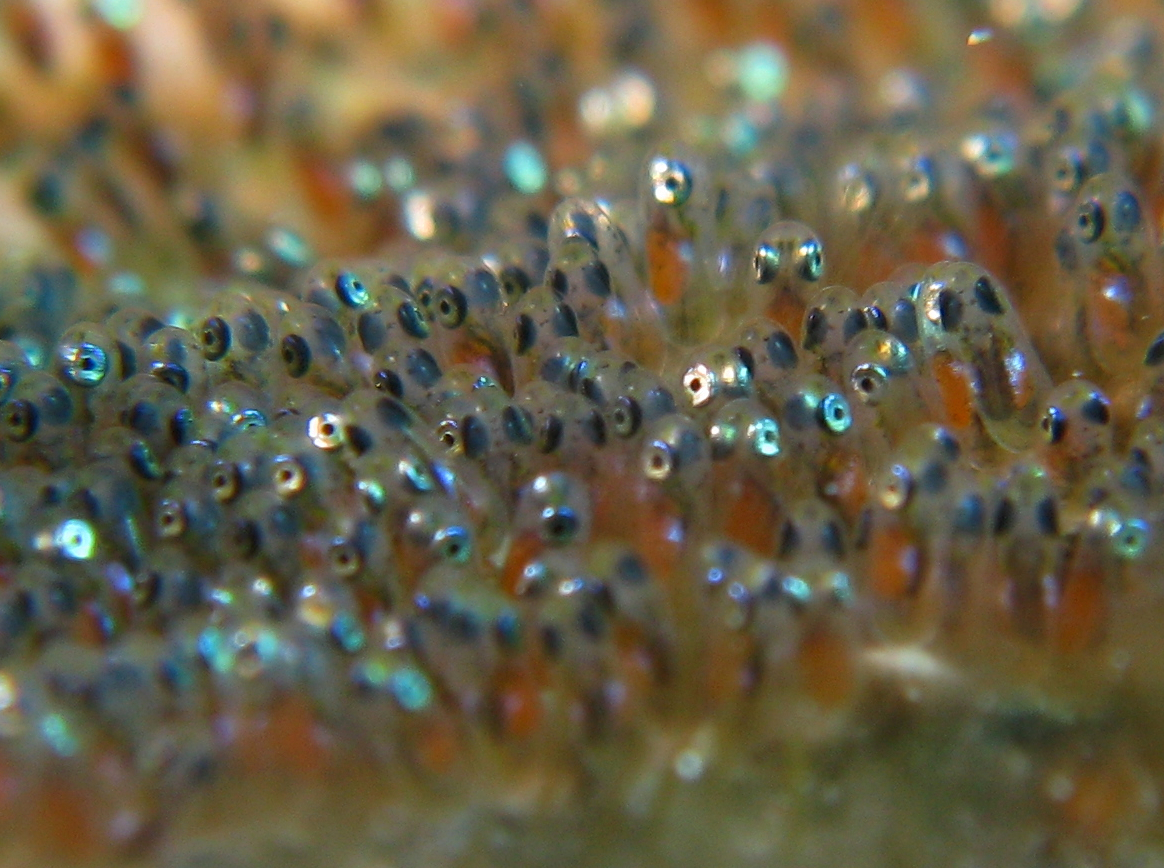|
Noturus Flavater
The Checkered Madtom (''Noturus flavater'') is, a small freshwater catfish found in the United States, in the rivers of Arkansas and Missouri. It is one of 29 species of madtom. Description Like many other madtom, the Checkered Madtom has a stout body. The body is yellow and has four obvious saddle-like stripes of black on top. The bottom is white to yellow. The dorsal fin on the back has a black blotch on the top third of the fin. The caudal (tail) fin has a black bar at its base and at the end. The caudal fin is usually straight or slightly rounded. The Checkered Madtom is thought to be the second largest species of madtom commonly 4-7 inches, with the largest being ''Noturus flavus''. Distribution and habitat The Checkered Madtom is uncommon in the upper White River (Arkansas–Missouri), White River system in southern Missouri and northern Arkansas. Checkered Madtom has a disjunct population in the Jacks Fork and Current River (Missouri) in Missouri. The fish inhabits t ... [...More Info...] [...Related Items...] OR: [Wikipedia] [Google] [Baidu] |
Arkansas
Arkansas ( ) is a landlocked state in the South Central United States. It is bordered by Missouri to the north, Tennessee and Mississippi to the east, Louisiana to the south, and Texas and Oklahoma to the west. Its name is from the Osage language, a Dhegiha Siouan language, and referred to their relatives, the Quapaw people. The state's diverse geography ranges from the mountainous regions of the Ozark and Ouachita Mountains, which make up the U.S. Interior Highlands, to the densely forested land in the south known as the Arkansas Timberlands, to the eastern lowlands along the Mississippi River and the Arkansas Delta. Arkansas is the 29th largest by area and the 34th most populous state, with a population of just over 3 million at the 2020 census. The capital and most populous city is Little Rock, in the central part of the state, a hub for transportation, business, culture, and government. The northwestern corner of the state, including the Fayetteville� ... [...More Info...] [...Related Items...] OR: [Wikipedia] [Google] [Baidu] |
Missouri
Missouri is a U.S. state, state in the Midwestern United States, Midwestern region of the United States. Ranking List of U.S. states and territories by area, 21st in land area, it is bordered by eight states (tied for the most with Tennessee): Iowa to the north, Illinois, Kentucky and Tennessee to the east, Arkansas to the south and Oklahoma, Kansas and Nebraska to the west. In the south are the Ozarks, a forested highland, providing timber, minerals, and recreation. The Missouri River, after which the state is named, flows through the center into the Mississippi River, which makes up the eastern border. With more than six million residents, it is the List of U.S. states and territories by population, 19th-most populous state of the country. The largest urban areas are St. Louis, Kansas City, Missouri, Kansas City, Springfield, Missouri, Springfield and Columbia, Missouri, Columbia; the Capital city, capital is Jefferson City, Missouri, Jefferson City. Humans have inhabited w ... [...More Info...] [...Related Items...] OR: [Wikipedia] [Google] [Baidu] |
Madtom
Madtoms are freshwater catfishes (order Siluriformes) of the genus ''Noturus'' of the family Ictaluridae. It is the most species-rich family of catfish in North America, native to the central and eastern United States, and adjacent parts of Canada. Their fin spines contain a mild venom with a sting comparable to that of a honey bee. Nearly half the species of madtom catfishes were described in a single comprehensive revision of the group. Morphology is very conserved in this genus; most of the species look very similar and telling them apart with the usual meristic and morphometric characters used to identify species is difficult. The more conspicuously variable attributes of these secretive fishes are features of pigmentation, which also are more difficult to quantify and often vary according to substrate and water quality. These species have small to tiny or fragmented ranges, and aspects of pigmentation are important diagnostic characters of each. Over one-quarter of the recogn ... [...More Info...] [...Related Items...] OR: [Wikipedia] [Google] [Baidu] |
Noturus Flavus
''Noturus flavus'', the stonecat, is a North American freshwater catfish of the family Ictaluridae. The common name is due to its habit of hiding near or under stones in fast-moving water. Anatomy Stonecats are small, slender, flat-headed catfishes, with the adipose fin keel-like and continuous with the caudal fin except for a shallow notch. While the dorsal and pectoral spines of most members of this family cause wounds that irritate, the stonecat has venom glands, particularly on the bases of the pectoral spines, that cause extreme pain similar to that of a wasp sting. The pectoral fin lacks any posterior serrae. Anal fin rays number 15 to 18, pectoral fin rays 9 to 11, and pelvic fin rays 8 to 10. The caudal fin rays number 55 to 67. The upper jaw projects beyond the lower jaw and the tooth pad on the upper jaw has a narrow, crescent-shaped extension on each side. The premaxillary band of teeth has lateral backward extensions. The skin of the stonecat is thick and is yellow ... [...More Info...] [...Related Items...] OR: [Wikipedia] [Google] [Baidu] |
White River (Arkansas–Missouri)
The White River is a river that flows through the U.S. states of Arkansas and Missouri. Originating in the Boston Mountains of northwest Arkansas, it arcs northwards through southern Missouri before turning back into Arkansas, flowing southeast to its mouth at the Mississippi River. Hydrography Course The source of the White River is in the Boston Mountains of northwest Arkansas, in the Ozark–St. Francis National Forest southeast of Fayetteville. The river flows northwards from its source to loop through southwest Missouri before heading southeast through Arkansas to its mouth on the Mississippi River. On entering the Mississippi River Valley region near Batesville, Arkansas, the river becomes navigable to shallow-draft vessels, and its speed decreases considerably. The final serves as the last segment of the McClellan-Kerr Arkansas River Navigation System; this part of the channel is deeper than the rest of the river. Discharge Despite being much shorter than ... [...More Info...] [...Related Items...] OR: [Wikipedia] [Google] [Baidu] |
Jacks Fork
Jacks Fork is one of two rivers in Missouri that are part of the Ozark National Scenic Riverways system. Starting in Texas County, Missouri, this spring-fed river flows in a general east to northeasterly direction through the heart of the geological area known as the Lower Ozark Natural Division. It is the major tributary of the Current River, ending at its confluence near Eminence, Missouri. At this location, its mean annual discharge is 478 cubic feet per second. The first from the Prongs to Bay Creek is deep valley and in the springtime provides Class II water. Due to lack of access, it is the most primitive of the rivers in the region. From Alley Spring to its confluence with the Current River it is a Class I River and is floatable year round with warm water. The Jacks Fork provides some of the most natural conditions in the region with many caves and natural springs. It is a popular recreation destination for canoeists and kayakers and is generally considered a Class I ... [...More Info...] [...Related Items...] OR: [Wikipedia] [Google] [Baidu] |
Current River (Missouri)
The Current River forms in the southeastern portion of the Ozarks of Missouri and becomes a 7th order stream as it flows southeasterly out of the Ozarks into northeastern Arkansas where it becomes a tributary of the Black River, which is a tributary of the White River, a tributary of the Mississippi River. The Current River is approximately long and drains about of land mostly in Missouri and a small portion of land in northeastern Arkansas. The headwaters of the Current River are nearly above sea level, while the mouth of the river lies around above sea level. The basin drains a rural area that is dominated by karst topography, underlain by dolomite and sandstone bedrock with a small area of igneous rock southeast of Eminence, Missouri. The annual daily mean discharge of the river near Doniphan, Missouri is per second. In 1964, over 134 mi (160 km) of the upper course of the river and its tributaries were federally protected as the Ozark National Scenic R ... [...More Info...] [...Related Items...] OR: [Wikipedia] [Google] [Baidu] |
Demersal Zone
The demersal zone is the part of the sea or ocean (or deep lake) consisting of the part of the water column near to (and significantly affected by) the seabed and the benthos. The demersal zone is just above the benthic zone and forms a layer of the larger profundal zone. Being just above the ocean floor, the demersal zone is variable in depth and can be part of the photic zone where light can penetrate, and photosynthetic organisms grow, or the aphotic zone, which begins between depths of roughly and extends to the ocean depths, where no light penetrates. Fish The distinction between demersal species of fish and pelagic species is not always clear cut. The Atlantic cod (''Gadus morhua'') is a typical demersal fish, but can also be found in the open water column, and the Atlantic herring (''Clupea harengus'') is predominantly a pelagic species but forms large aggregations near the seabed when it spawns on banks of gravel. Two types of fish inhabit the demersal zone ... [...More Info...] [...Related Items...] OR: [Wikipedia] [Google] [Baidu] |
Spawn (biology)
Spawn is the eggs and sperm released or deposited into water by aquatic animals. As a verb, ''to spawn'' refers to the process of releasing the eggs and sperm, and the act of both sexes is called spawning. Most aquatic animals, except for aquatic mammals and reptiles, reproduce through the process of spawning. Spawn consists of the reproductive cells (gametes) of many aquatic animals, some of which will become fertilized and produce offspring. The process of spawning typically involves females releasing ova (unfertilized eggs) into the water, often in large quantities, while males simultaneously or sequentially release spermatozoa ( milt) to fertilize the eggs. Most fish reproduce by spawning, as do most other aquatic animals, including crustaceans such as crabs and shrimps, molluscs such as oysters and squid, echinoderms such as sea urchins and sea cucumbers, amphibians such as frogs and newts, aquatic insects such as mayflies and mosquitoes and corals, which are actuall ... [...More Info...] [...Related Items...] OR: [Wikipedia] [Google] [Baidu] |
Freshwater Fish Of The United States
Fresh water or freshwater is any naturally occurring liquid or frozen water containing low concentrations of dissolved salts and other total dissolved solids. Although the term specifically excludes seawater and brackish water, it does include non- salty mineral-rich waters such as chalybeate springs. Fresh water may encompass frozen and meltwater in ice sheets, ice caps, glaciers, snowfields and icebergs, natural precipitations such as rainfall, snowfall, hail/ sleet and graupel, and surface runoffs that form inland bodies of water such as wetlands, ponds, lakes, rivers, streams, as well as groundwater contained in aquifers, subterranean rivers and lakes. Fresh water is the water resource that is of the most and immediate use to humans. Water is critical to the survival of all living organisms. Many organisms can thrive on salt water, but the great majority of higher plants and most insects, amphibians, reptiles, mammals and birds need fresh water to survive. Fre ... [...More Info...] [...Related Items...] OR: [Wikipedia] [Google] [Baidu] |
Endemic Fauna Of The United States
Endemism is the state of a species being found in a single defined geographic location, such as an island, state, nation, country or other defined zone; organisms that are indigenous to a place are not endemic to it if they are also found elsewhere. For example, the Cape sugarbird is found exclusively in southwestern South Africa and is therefore said to be ''endemic'' to that particular part of the world. An endemic species can be also be referred to as an ''endemism'' or in scientific literature as an ''endemite''. For example '' Cytisus aeolicus'' is an endemite of the Italian flora. '' Adzharia renschi'' was once believed to be an endemite of the Caucasus, but it was later discovered to be a non-indigenous species from South America belonging to a different genus. The extreme opposite of an endemic species is one with a cosmopolitan distribution, having a global or widespread range. A rare alternative term for a species that is endemic is "precinctive", which applies to s ... [...More Info...] [...Related Items...] OR: [Wikipedia] [Google] [Baidu] |






.jpg)